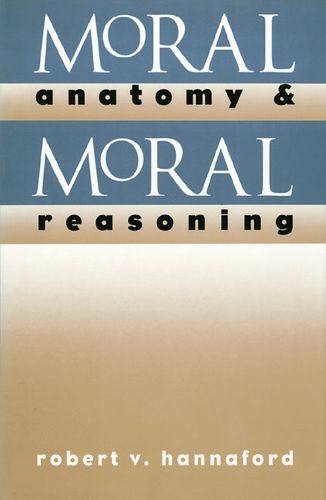Readings Newsletter
Become a Readings Member to make your shopping experience even easier.
Sign in or sign up for free!
You’re not far away from qualifying for FREE standard shipping within Australia
You’ve qualified for FREE standard shipping within Australia
The cart is loading…






Robert Hannaford’s book answers two fundamental questions: How do we come to do what is morally demanded of us - that is, what leads us to
acceptable acts ? And how does our being moral emerge from what we are and how we are related to each other? Hannaford shows that doing (reasoning and acting morally) and being (our
moral anatomy
or essential nature) do not exist in a vacuum, but are rooted in community, in our relations with others. Moral reasoning, he argues, focuses on what we ought to do in a situation where we must consider the needs, desires and expectations of others.
It’s about doing , he explains.
We provide food and water for the victims of an urban riot or a nearby natural disaster, and when we are met by a lost child, we try to help it in finding its parents. As responsible people we [make] choices that we believe can be shown to be acceptable to others in the community. What is morally correct must reflect the judgement of the moral community . Rejecting relativists who claim the impossibility of universal moral values, Hannaford develops a theory based on a variation of the Golden Rule. He demonstrates how our natural responsiveness to others’ feelings and sufferings, our concern for other persons
conceived as like ourselves , lies at the heart of our moral anatomy and moral reasoning and ultimately guides our moral actions.
$9.00 standard shipping within Australia
FREE standard shipping within Australia for orders over $100.00
Express & International shipping calculated at checkout
Robert Hannaford’s book answers two fundamental questions: How do we come to do what is morally demanded of us - that is, what leads us to
acceptable acts ? And how does our being moral emerge from what we are and how we are related to each other? Hannaford shows that doing (reasoning and acting morally) and being (our
moral anatomy
or essential nature) do not exist in a vacuum, but are rooted in community, in our relations with others. Moral reasoning, he argues, focuses on what we ought to do in a situation where we must consider the needs, desires and expectations of others.
It’s about doing , he explains.
We provide food and water for the victims of an urban riot or a nearby natural disaster, and when we are met by a lost child, we try to help it in finding its parents. As responsible people we [make] choices that we believe can be shown to be acceptable to others in the community. What is morally correct must reflect the judgement of the moral community . Rejecting relativists who claim the impossibility of universal moral values, Hannaford develops a theory based on a variation of the Golden Rule. He demonstrates how our natural responsiveness to others’ feelings and sufferings, our concern for other persons
conceived as like ourselves , lies at the heart of our moral anatomy and moral reasoning and ultimately guides our moral actions.